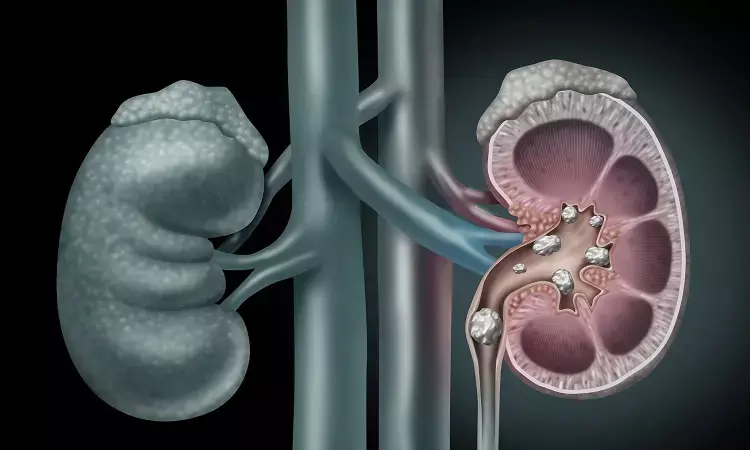- Home
- Medical news & Guidelines
- Anesthesiology
- Cardiology and CTVS
- Critical Care
- Dentistry
- Dermatology
- Diabetes and Endocrinology
- ENT
- Gastroenterology
- Medicine
- Nephrology
- Neurology
- Obstretics-Gynaecology
- Oncology
- Ophthalmology
- Orthopaedics
- Pediatrics-Neonatology
- Psychiatry
- Pulmonology
- Radiology
- Surgery
- Urology
- Laboratory Medicine
- Diet
- Nursing
- Paramedical
- Physiotherapy
- Health news
- Fact Check
- Bone Health Fact Check
- Brain Health Fact Check
- Cancer Related Fact Check
- Child Care Fact Check
- Dental and oral health fact check
- Diabetes and metabolic health fact check
- Diet and Nutrition Fact Check
- Eye and ENT Care Fact Check
- Fitness fact check
- Gut health fact check
- Heart health fact check
- Kidney health fact check
- Medical education fact check
- Men's health fact check
- Respiratory fact check
- Skin and hair care fact check
- Vaccine and Immunization fact check
- Women's health fact check
- AYUSH
- State News
- Andaman and Nicobar Islands
- Andhra Pradesh
- Arunachal Pradesh
- Assam
- Bihar
- Chandigarh
- Chattisgarh
- Dadra and Nagar Haveli
- Daman and Diu
- Delhi
- Goa
- Gujarat
- Haryana
- Himachal Pradesh
- Jammu & Kashmir
- Jharkhand
- Karnataka
- Kerala
- Ladakh
- Lakshadweep
- Madhya Pradesh
- Maharashtra
- Manipur
- Meghalaya
- Mizoram
- Nagaland
- Odisha
- Puducherry
- Punjab
- Rajasthan
- Sikkim
- Tamil Nadu
- Telangana
- Tripura
- Uttar Pradesh
- Uttrakhand
- West Bengal
- Medical Education
- Industry
Lumasiran reduces kidney failure risk in primary hyperoxaluria type 1 patients: NEJM

Delhi: The administration of lumasiran reduces the excretion of urinary oxalate -- the cause of progressive kidney failure in patients with primary hyperoxaluria type 1 (PH1), finds a recent study. According to the study, published in the New England Journal of Medicine, after 6 months of treatment majority of patients who received lumasiran had normal or near-normal levels.
Primary hyperoxaluria type 1 is a rare genetic disease that affects the kidneys. It caused by the overproduction of oxalate leading to nephrocalcinosis, systemic oxalosis, kidney stones, and kidney failure. Lumasiran is an investigational RNA interference (RNAi) therapeutic agent that reduces the production of hepatic oxalate by targeting glycolate oxidase.
Sander F. Garrelfs, University of Amsterdam, Amsterdam, Netherlands, and colleagues performed a double-blind, phase 3 trial. PH1 patients (6 years or older; n=39) were randomly assigned in a ratio of 2:1 to receive subcutaneous lumasiran (n=26) or placebo (n=13) for 6 months (with doses given at baseline and at months 1, 2, 3, and 6).
The primary end point was the percent change in 24-hour urinary oxalate excretion from baseline to month 6 (mean percent change across months 3 through 6).
Key findings of the study include:
- The least-squares mean difference in the change in 24-hour urinary oxalate excretion (lumasiran minus placebo) was −53.5 percentage points, with a reduction in the lumasiran group of 65.4% and an effect seen as early as month 1.
- The between-group differences for all hierarchically tested secondary end points were significant.
- The difference in the percent change in the plasma oxalate level (lumasiran minus placebo) was −39.5 percentage points.
- In the lumasiran group, 84% of patients had 24-hour urinary oxalate excretion no higher than 1.5 times the upper limit of the normal range at month 6, as compared with 0% in the placebo group.
- Mild, transient injection-site reactions were reported in 38% of lumasiran-treated patients.
"Lumasiran reduced urinary oxalate excretion, the cause of progressive kidney failure in PH1," wrote the authors. "The majority of patients who received lumasiran had normal or near-normal levels after 6 months of treatment."
Reference:
The study titled, "Lumasiran, an RNAi Therapeutic for Primary Hyperoxaluria Type 1," is published in the New England Journal of Medicine.
DOI: https://www.nejm.org/doi/full/10.1056/NEJMoa2021712
Dr Kamal Kant Kohli-MBBS, DTCD- a chest specialist with more than 30 years of practice and a flair for writing clinical articles, Dr Kamal Kant Kohli joined Medical Dialogues as a Chief Editor of Medical News. Besides writing articles, as an editor, he proofreads and verifies all the medical content published on Medical Dialogues including those coming from journals, studies,medical conferences,guidelines etc. Email: drkohli@medicaldialogues.in. Contact no. 011-43720751


